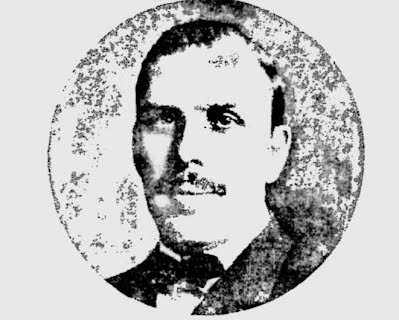Pittsburgh at the Movies
On June 19, 1905, when 450 people walked into a previously vacant storefront at 451 Smithfield Street, they didn’t know they were making history. They had each paid a nickel to see a 15-minute series of moving pictures in the storefront Harry Davis and John P. Harris had rented, borrowing the name “Nickelodeon” for its marquee. Social activists were quick to label this crude, cramped storefront with poor ventilation and hard seats morally unsafe and physically dangerous. But the public didn’t care. By 1908 there were 8000 copycat Nickelodeons in neighborhoods all across America, and nearly 2 million Americans had visited them.
When Harris and Davis opened their first Nickelodeon on Smithfield Street, they were already big-time entrepreneurs. Davis was one of the country’s most successful impresarios. He built and managed virtually all the large theaters in Pittsburgh – vaudeville theaters, opera houses, legitimate theaters, and even an acting company.
Sons of immigrant workers, brothers-in-law, and eventually partners, Davis and Harris taught themselves how to make money hanging around carnivals, pool halls, boxing rings, vaudeville houses, and circuses as kids. Savvy observers and often savvier participants, they grew into businesspeople who understood the amusements the public wanted, how much they’d pay for those amusements, and, most importantly, the profit to be made in small change.
To be sure, moving pictures had been around for at least 20 years in one form or another before they found their first permanent home in the Smithfield Street Nickelodeon. Short, silent 10–15-minute film sequences had previously been used as filler in between vaudeville acts and even at the end of opera performances in theaters that managers like Harris and Davis owned. Itinerant merchants in other parts of the country had rented storefronts, hung up a sheet as a screen and projected moving pictures for a small fee. It was a low-overhead way to make easy money. After a couple of months, they packed up and moved on to the next city to show the same moving pictures to a different audience. What Harris and Davis did was give moving pictures center stage in their own dedicated theater, change the featured pictures every week, and by only charging a nickel a head, gave moviegoers more than they paid for.
The Nickelodeon on Smithfield Street saw 490 patrons the first day it opened its doors. On day two, and every day after, the Smithfield Street Nickelodeon entertained thousands of moviegoers every day. Open from 8:00 am to midnight seven days a week, anyone with a nickel could walk into the Nickelodeon throughout the sixteen hours a day it was open to watch a movie. Immigrants getting off a twelve-hour shift from the mill, women shopping in new department stores like Kaufmann’s right across the street, kids with a nickel to burn. The pictures were silent, so patrons didn’t have to speak English to enjoy them. The Nickelodeon was classless, ageless, and genderless. A shopgirl could find herself sitting in a darkened room next to an exhausted millworker or a rowdy bunch of kids. The Nickelodeon, it turned out, was democratizing America at a time when America was democratizing itself.
Life was good and getting better in the Steel City in 1905, The region’s steel mills were producing to capacity around the clock and wages were rising. For many of Pittsburgh’s working poor, a nickel was still significant, but for an ever-increasing number of workers those extra nickels could be spent on something other than food, shelter and clothing. A middle class was emerging. And the Harris/Davis partnership was there to pick up the change.
The opening of the Harris/Davis Nickelodeon wasn’t preceded by world premier hoopla, a big PR campaign, or searchlight beams across the city sky. We don’t even know for sure what picture was playing the day it opened.
As far as Harris and Davis were concerned, they were just opening another type of theater. They were there to make money. They ended up making history.
Within five years the template for the Harris/Davis Smithfield Street Nickelodeon, which had spawned thousands of others across the country, had been replaced by large, elegant, gilded movie theaters soon to be silent no more. The motion picture industry had arrived. And Pittsburgh was there at its beginnings.
Learn more about Pittsburgh’s theaters with our Virtual Storytelling On-Demand content:






